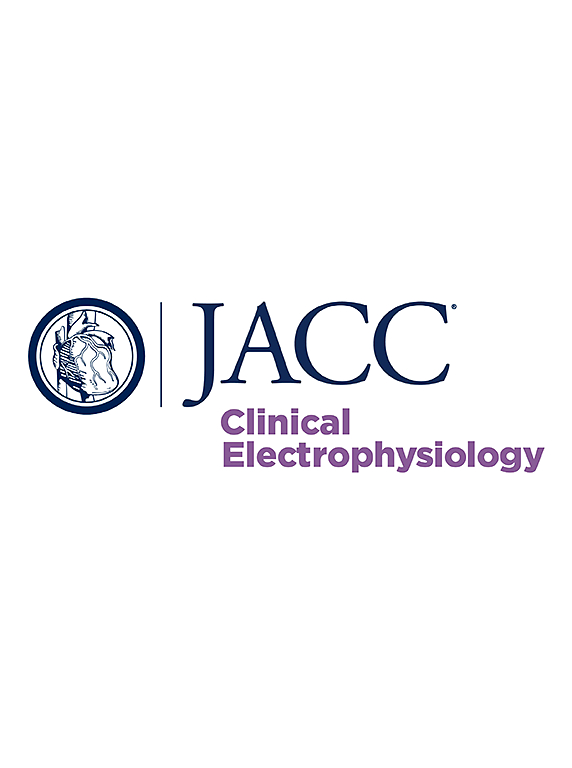房颤患者睡眠呼吸障碍概率多变量预测模型的建立:MOODS-AF。
IF 7.7
1区 医学
Q1 CARDIAC & CARDIOVASCULAR SYSTEMS
引用次数: 0
摘要
背景:睡眠呼吸障碍(SDB)在房颤(AF)患者中很常见,并对治疗结果产生负面影响。房颤患者选择SDB检测的最佳工具缺乏。目的:本研究旨在开发并验证一种预测工具,用于检测AF合并中重度SDB的患者。方法:前瞻性收集连续442例行多导睡眠图的非卧床房颤患者资料作为衍生样本。在409名患者的测试队列中进行了外部验证。显著性SDB定义为呼吸暂停-呼吸不足指数≥15/h。采用多变量logistic回归构建预测模型,计算个体SDB概率。结果:在衍生和验证队列中,分别有34%和54%的患者存在显著的SDB。预测模型包括年龄、性别、身体质量指数(BMI)、糖尿病和既往中风或短暂性脑缺血发作。经外部验证,模型对显著性SDB有较好的判别能力(c统计量:0.75;95% ci: 0.71-0.80)。由男性(1分)、超重(BMI: 25-29.9 kg/m2, 1分)或肥胖(BMI:≥30 kg/m2, 3分)、糖尿病(2分)和中风/短暂性脑缺血发作(2分)组成的简化综合评分(心境,0-8分)在外部验证上有很好的鉴别性(c统计量:0.73;95% ci: 0.68-0.77)。作为一种排除测试或规则测试,心境评分≤1分检测显著性SDB的敏感性为100%,评分≥5分检测显著性SDB的特异性为96%。结论:心境评分为房颤患者显著SDB的个体化和准确概率提供了依据。心境评分有可能帮助临床决策并允许有效的资源分配。本文章由计算机程序翻译,如有差异,请以英文原文为准。
Development of a Multivariable Prediction Model to Estimate Probability of Sleep-Disordered-Breathing in Patients With AF
Background
Sleep-disordered breathing (SDB) is common in patients with atrial fibrillation (AF) and negatively impacts treatment outcomes. Optimal tools for AF patient selection for SDB testing are lacking.
Objectives
This study sought to develop and validate a prediction tool to detect patients who have AF with moderate-to-severe SDB.
Methods
Prospectively collected data on 442 consecutive ambulatory patients with AF who were undergoing polysomnography were used as the derivation sample. Performance was externally validated on a test cohort of 409 patients. Significant SDB was defined as an apnea-hypopnea-index ≥15/h. Multivariable logistic regression was used to construct a prediction model and calculate individual SDB probabilities.
Results
Significant SDB was present in 34% and 54% of patients in the derivation and validation cohorts, respectively. The prediction model comprised age, sex, body mass index (BMI), diabetes, and previous stroke or transient ischemic attack. Following calibration, the model had a good discrimination ability for significant SDB on external validation (C-statistic: 0.75; 95% CI: 0.71-0.80). A simplified composite score (MOODS, range 0-8) comprised male sex (1 point), overweight (BMI: 25-29.9 kg/m2, 1 point) or obesity (BMI: ≥30 kg/m2, 3 points), diabetes (2 points), and stroke/transient ischemic attack (2 points) had good discrimination on external validation (C-statistic: 0.73; 95% CI: 0.68-0.77). As a rule-out or a rule-in test, a MOODS score of ≤1 had a 100% sensitivity and score of ≥5 had a 96% specificity for detecting significant SDB, respectively.
Conclusions
The MOODS score provides an individualized and accurate probability of significant SDB in patients with AF. MOODS has the potential to aid clinical decision making and allow efficient resource allocation.
求助全文
通过发布文献求助,成功后即可免费获取论文全文。
去求助
来源期刊

JACC. Clinical electrophysiology
CARDIAC & CARDIOVASCULAR SYSTEMS-
CiteScore
10.30
自引率
5.70%
发文量
250
期刊介绍:
JACC: Clinical Electrophysiology is one of a family of specialist journals launched by the renowned Journal of the American College of Cardiology (JACC). It encompasses all aspects of the epidemiology, pathogenesis, diagnosis and treatment of cardiac arrhythmias. Submissions of original research and state-of-the-art reviews from cardiology, cardiovascular surgery, neurology, outcomes research, and related fields are encouraged. Experimental and preclinical work that directly relates to diagnostic or therapeutic interventions are also encouraged. In general, case reports will not be considered for publication.
 求助内容:
求助内容: 应助结果提醒方式:
应助结果提醒方式:


